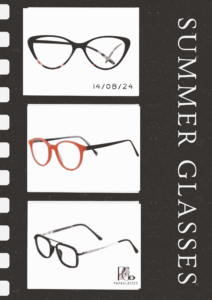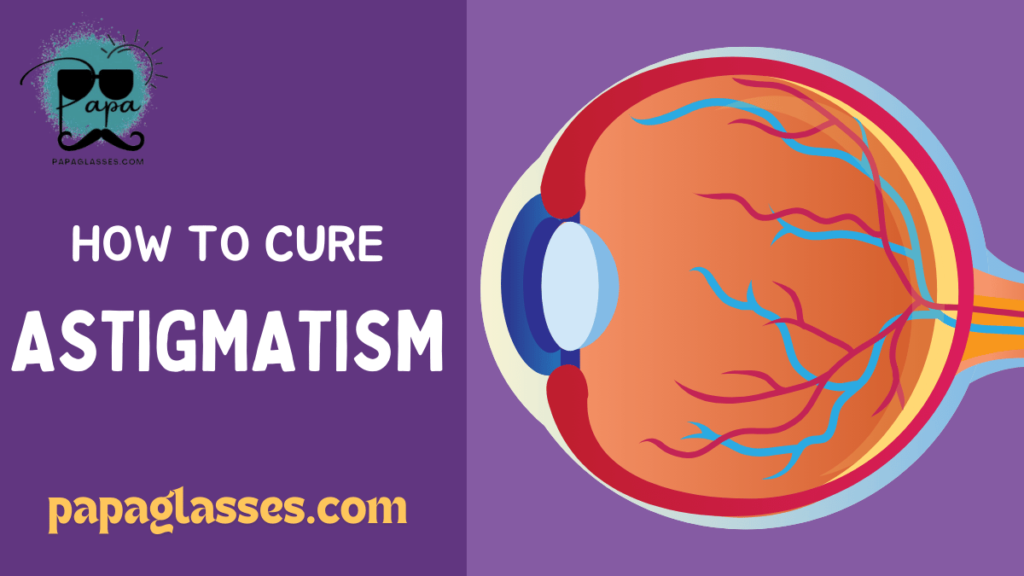
0
0
Items Seleceted

Have you ever noticed that your vision seems a bit blurry, even when you’re wearing your regular glasses or contact lenses? You might be experiencing astigmatism, a common vision condition that affects millions of people worldwide. In this blog post, we’ll dive into what astigmatism is, how it affects your vision, and most importantly, how prescription eyeglasses can help you see the world more clearly.
Astigmatism is a refractive error, which means it’s related to how light bends when it enters your eye. In a perfectly shaped eye, light focuses on a single point on the retina, resulting in clear vision. However, if you have astigmatism, your eye’s cornea or lens isn’t evenly curved, causing light to focus on multiple points. This leads to blurred or distorted vision at all distances.
Imagine looking at a clock face. If you have astigmatism, some numbers might appear clearer than others, or straight lines might look wavy. This is because your eye can’t focus light evenly across all angles.
If you’re wondering whether you might have astigmatism, here are some common symptoms to look out for:
1. Blurred or distorted vision at all distances
2. Eyestrain or discomfort, especially after reading or using digital devices
3. Squinting to try and see more clearly
4. Headaches, particularly after visual tasks
5. Difficulty seeing clearly at night, especially when driving
If you’re experiencing any of these symptoms, it’s a good idea to schedule an eye exam with an optometrist or ophthalmologist.
During a comprehensive eye exam, your eye care professional will use various tests to check for astigmatism:
1. Visual acuity test: This is the familiar eye chart test that measures how well you can see at different distances.
2. Refraction test: Your doctor will use a device called a phoropter to measure your eye’s focusing power and determine your exact prescription.
3. Keratometry: This test measures the curvature of your cornea.
These tests help your eye doctor determine not only if you have astigmatism, but also its severity and the best way to correct it.
Prescription glasses for astigmatism use special lenses called toric lenses. These lenses have different focusing powers in different meridians of the lens, which compensates for the uneven curvature of your eye. Here’s how they work:
1. Custom correction: Your eye doctor will determine the exact prescription needed to correct your specific astigmatism. This includes the lens power and the axis, which indicates the angle at which the correction needs to be applied.
2. Even focus: The toric lenses redistribute light evenly onto your retina, effectively neutralizing the distortion caused by your eye’s irregular shape.
3. Clear vision at all distances: Unlike regular spherical lenses, toric lenses can correct your vision for both near and far distances, addressing the unique needs of astigmatism.
4. Comfort and reduced eyestrain: By correcting the astigmatism, these glasses can significantly reduce eye fatigue and discomfort associated with the condition.
When you first start wearing glasses for astigmatism, you might experience a brief adjustment period. This is completely normal! Your brain needs a little time to adapt to the new way it’s receiving visual information. Here are some tips to help you adjust:
1. Wear your glasses consistently, even if they feel strange at first.
2. Give yourself at least a week to get used to the new prescription.
3. If you experience persistent discomfort or vision problems after a week, consult your eye doctor.
While prescription eyeglasses are an excellent and common solution for astigmatism, they’re not the only option. Depending on your specific situation and preferences, you might also consider:
1. Contact lenses: Specially designed toric contact lenses can also correct astigmatism.
2. Orthokeratology: This involves wearing rigid contact lenses at night to temporarily reshape your cornea.
3. Laser eye surgery: Procedures like LASIK can permanently reshape your cornea to correct astigmatism.
However, for many people, prescription eyeglasses remain the simplest, most cost-effective, and safest option for managing astigmatism.
Living with uncorrected astigmatism can be frustrating and even impact your quality of life. But with the right prescription eyeglasses, you can experience the world in crisp, clear detail. If you suspect you might have astigmatism, don’t hesitate to schedule an eye exam. Your journey to clearer vision might be just a pair of glasses away!
Remember, regular eye check-ups are crucial for maintaining good vision health. So keep those appointments, wear your glasses as prescribed, and enjoy seeing the world in all its beautiful clarity!
Contact number –+64 224665405
Our Instagram page is waiting for you – do follow us on social media for latest updates and promotion
Our website link –https://papaglasses.Com
Email – [email protected]





